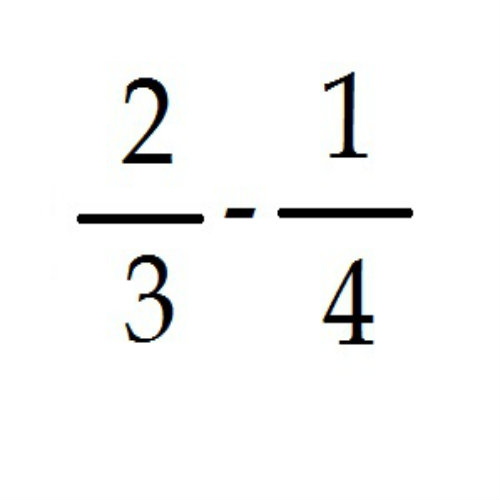How to Add and Subtract Fractions with Different Denominators

Those students who are learning how to do fractions tend to get afraid when they have to add or subtract them. If the fractions that need to be added/subtracted have the same denominators and they are equivalent fractions, then there is not much of a problem. For all students who have problems in adding fractions with different denominators, there is a very simple technique involved which is explained in the preceding steps. After this, you will not only find the solution easily, but this part of the Mathematical branch will become one of your strong areas.
Instructions
-
1
Arranging the fractions
Whether you are adding or subtracting a fraction, the very first thing is to arrange them properly. The order does not really matter if the fractions are to be added, but if you have to subtract them, then write the greater fraction first. Remember that:
4 ≥ 3
but
¼ ≤ 1/3 -
2
Adding the Fraction
No matter how many fractions there are with different denominators, you may arrange them in any order as long as you have to add them. For example:
½ + 1/3 + ¼
Now think of three numbers that, when multiplied with the numerators and denominators of all the above three fractions, get the same number in the denominators. Hence,
Multiply numerator and denominator in ½ with 6 to get 6/12
Multiply numerator and denominator in 1/3 with 4 to get 4/12
Multiply numerator and denominator in ¼ with 3 to get 3/12
Now add:
6/12 + 4/12 + 3/12 = 6+4+3 / 12
= 13/12 -
3
Subtracting the Fractions
The same technique is followed while subtracting the fractions i.e. you multiply the numerators and denominators of the fractions (to be subtracted) with a number that equalizes the denominators. Besides, just ensure that the greater fraction is at the left side of the negative (-) sign. Hence:
½ - 1/5
Equate the denominators of two fractions by multiplying the first fraction with 5 to make it 5/10 and the other fraction by 2 to make it 2/10
Now subtract:
5/10 – 2/10 = 5 – 2 /10
= 3/10






